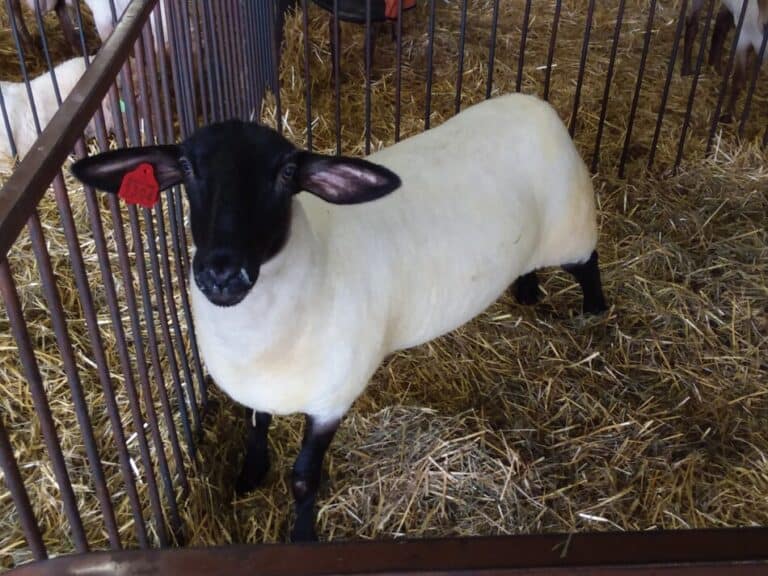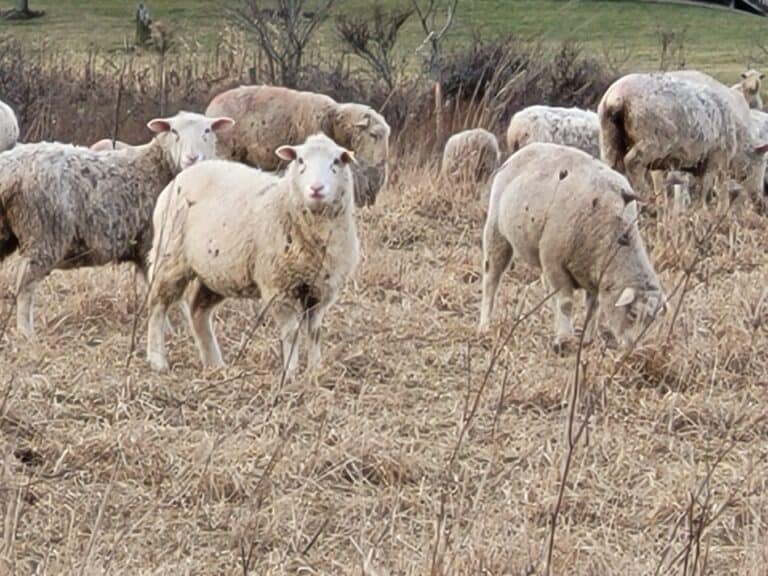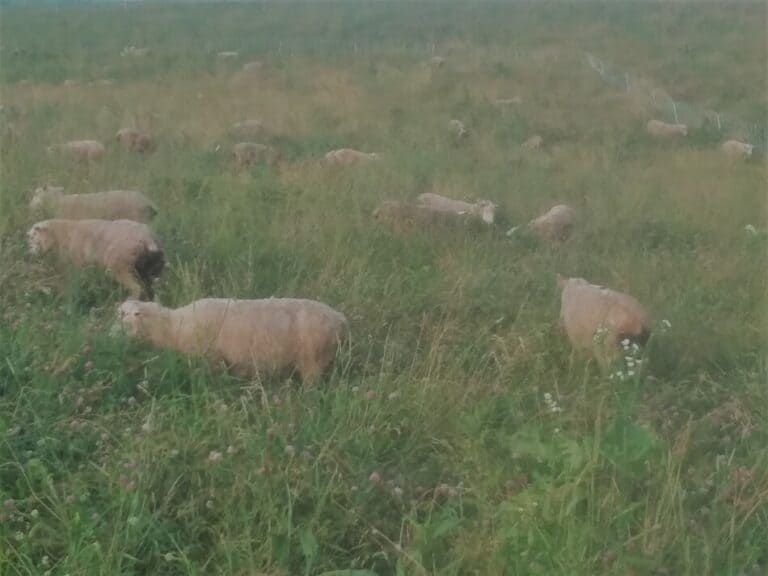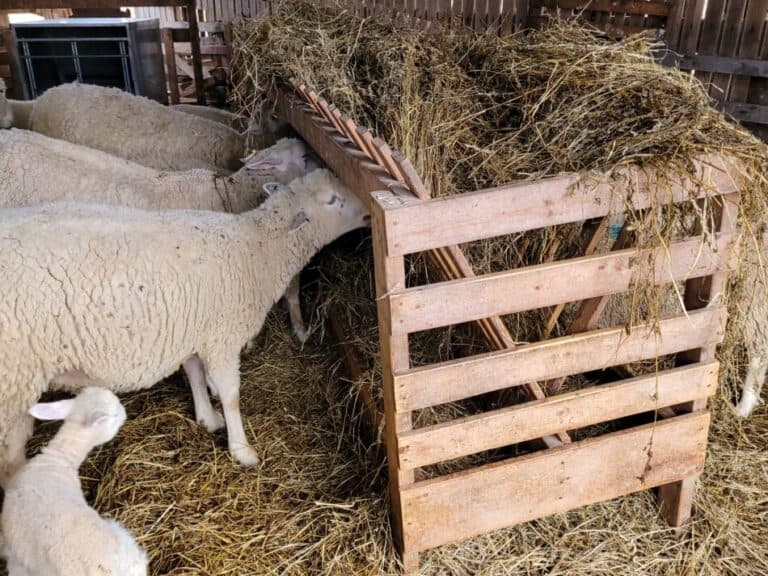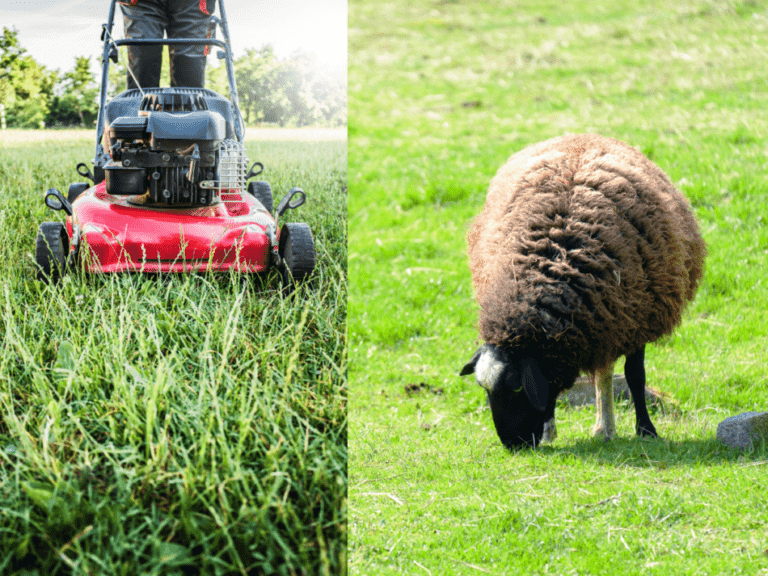Do Sheep Ruin Pastures? Keeping Sheep And Pastures Healthy
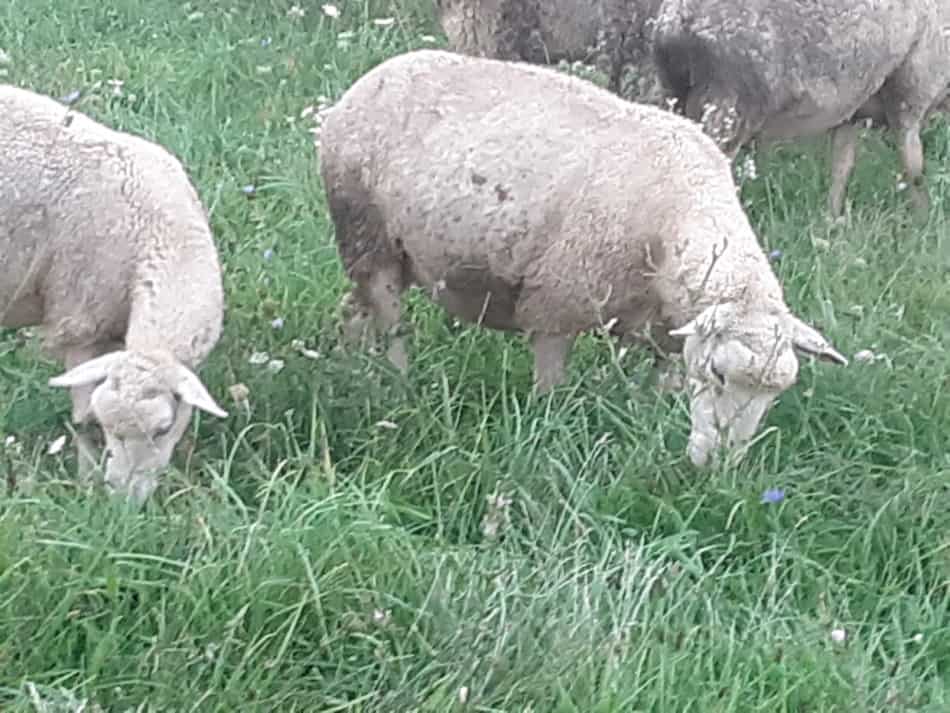
Sheep look great out grazing in a pasture! I love to see happy sheep eating grass. But is grazing sheep on your pasture really good for the pasture plants and the soil underneath?
Sheep do not ruin pastures. Properly managed sheep improve pasture quality and performance. However, mismanagement of any grazing animals, including sheep, can and will degrade pastured land.
For some reason, there seem to be two common (and opposing) answers to sheep and pastures:
- Sheep are good for pastures
- Sheep are really bad for or are ruining pastures.
Wow, those two statements are polar opposites! It sounds like something is missing here, which one is true?
The missing part is management. Poor management can indeed ruin a pasture.
This has nothing to do with the animals, of course, sheep or other wise, it has to do with the people managing, actually mismanaging, the sheep and the land.
How do we move our sheep and fence them in, year round? Check out ElectroNet 9/35/12 For Sheep for all the details on the things we love and the things we aren’t too keen on with this netting.
The flip side is that good management can and will improve a pasture, again not having anything to do with the livestock in this case being sheep.
The eaters of the pasture are helping to improve the pasture due to the management of their movements. This could be cattle, sheep, goats, pigs, etc.
Now that we know the sheep are just eaters and the results really come from the management, what do we need to do to make our pastures healthy and productive?
This will depend on your situation, of course, but there are basic ideas that apply to all grazing. Let’s get started!
Consider the needs of the pasture land
- Number of sheep your selected area can support vs how many sheep you plan to graze
- What type of pasture grasses are you managing to promote or discourage
- How to tell by pasture condition when sheep need to move
- What to do when you do not have more grass for your sheep
Know the number of sheep your pasture can support
The more sheep you have on your pasture the higher the output of the pasture is going to need to be to support your animals.
The ability of your pasture to produce forage (forage is a catch all term for plants the sheep could eat) is the biggest variable you will have to consider.
Forage production changes based on weather and seasons of the year.
The only way to determine what works for you, your sheep and your land is to try and see what happens on your farm then adjust as needed.
The “Perfect” Sheep Pasture is an article by Ulf Kintzel going over what he noticed about his pastures when he moved to his farm and how he decided to change what was growing in them to better suit his flock.
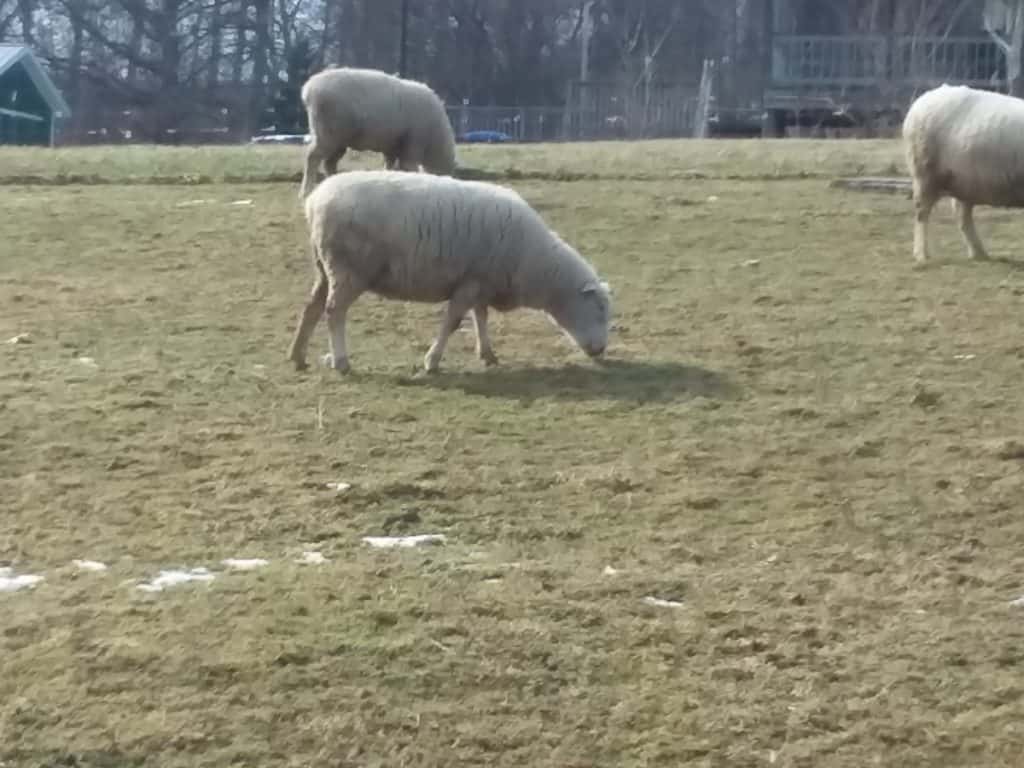
Actually, this is the reason I used the picture above. Not a lot of grass to be seen. So true, but look closely, there’s snow.
This picture is from late February and we live in Ohio. Our grass stops growing in October.
The pasture still having grass for the sheep to eat in February means we kept them off of it in the grazing season so there would be growth left to eat in the winter.
Small Acreage And Backyard Sheep will go over sheep on a smaller scale, even backyard sized.
Move sheep to a new pasture based on the grass
Move your sheep to new grass when the pasture they have has been mostly eaten, not completely eaten to the ground. Leaving some grass stubble allows the grass to regrow more quickly.
How long each move will support your sheep depends upon the size of the move and how the forage is growing in that specific area.
We have moves that are two days worth of grass and some that are the same size that are one day’s worth of grass. It depends upon where we are at on the farm.
When your sheep are done grazing in a pasture is determined by what grasses and other forages you are trying to promote and which ones you are trying to discourage.
Some forages do well with being grazed down to a shorter plant length- bluegrass and white clover are two easy examples. These two forages seem to do well with multiple grazings down to a shorter height.
The trade off when you manage your pasture for shorter growth is total forage production for that area is less than if you managed the pasture for taller forages.
There is nothing wrong with utilizing the shorter forages as long as the plants are growing well and keeping the the soil covered.
Increase rest time before regrazing
If you want to have the most growth in a pasture you must manage the grazing periods to allow the forages to grow to full height before turning in the sheep.
Once the sheep have fully grazed down the area they need to be moved off to another area.
This pasture must be rested until the plants are at full height again then the sheep can come back into this pasture.
Only allowing the sheep to graze taller forages promotes plants like orchard grass and red clover. These taller forages produce much more eating per acre for your sheep than the shorter forages.
The trade off here is that the longer rest period is mandatory to keep these taller growth plants healthy.
Frequent repeated grazings to a short height will weaken these taller growth forages so they will not be able to out compete the shorter forages.
Move sheep when grass is half eaten
You will need to move the sheep to a new pasture when about half of the forage in the current pasture is eaten or in the case of the taller forages knocked over.
If the sheep have shaved the grass down to nothing, they have been there too long and you are reducing the total production of the pasture for the year.
Leaving some growth helps the forage regrowth faster for the next grazing.
The time your flock can spend in an area changes with the weather and season of the year. Forage growth animal nutritional needs and soil conditions are always changing.
Spend time in the pasture with your sheep
Head on out and spend some time with the flock and see how they are doing.
Are the sheep happily grazing? How does the grass look? Is the ground handling the foot traffic easily?
Move the sheep as needed according to your situation. Each year, season, flock of sheep, and pasture has specific needs.
Your job is to coordinate all this together for the best possible results with the healthiest sheep and pastures.
If you find that you have plenty of pasture, or maybe a bit too much, consider making some hay off of your extra to use later in the non growing season.
This is a great “problem” to have! My article How Do You Make Hay? will get you started.
Out of sheep pasture? Make a sacrifice area
This is a tough situation to be in for any livestock owner but it can and does happen. You now have to make the decision of which aspect of your farm to prioritize.
How Many Bales Of Hay For Sheep? will help you figure up your flock’s hay usage for when you are short on grass.
You have two options.
Option 1: Let the sheep in a pasture that is not rested enough and hope for the best.
The good news here is the sheep will have plenty of opportunity to move around and eat the little sprouts of regrowth coming up off the the recently grazed forages.
Sheep love the tender new growth and will gobble it right up.
The bad news is eating the newly sprouted regrowth is hard on the plants in your pasture.
It depletes their energy stores making them weaker and less able to compete for growing space and nutrients.
Option 2. Make a sacrifice area.
A sacrifice area is a small part of the pasture that you section off to keep the sheep away from the rest of the pastures.
The sacrifice area you will keep the sheep in is “sacrificed” to maintain the quality and production ability of the rest of your land.
You will need to feed and water your sheep in the sacrifice area.
Sometimes the pasture needs protected from the sheep to keep them from overgrazing an area. Other times to prevent damaging the soil structure.
Lots of sheep trotting around on soggy ground compacts the soil. Compacted soil does not have the air spaces needed for microorganisms, worms or roots to thrive so it can not grow the best forages for your sheep.
Once acceptable pasture conditions return the sheep can be put back out to pasture.
The sacrifice area can be renovated to be productive again or kept as a reserve space to be ready next season if these less than ideal conditions are common in your area.
Final Thoughts
Management decisions regarding your pastures and sheep need to be tailored to your specific farm and the needs of your sheep.
Remember, you are seeing the results of your previous choices. If you like what you see keep up the good work! If you don’t like what you see make some changes!
Get out to the pasture. Spend some time with your sheep. Adjust as you learn. Enjoy the opportunity.
